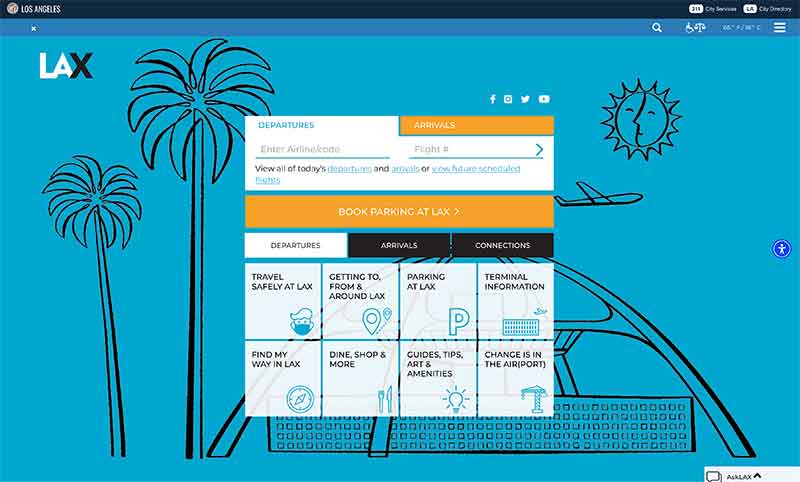Jose Mier loves convenience and when it comes to air travel that means taking Burbank airport in lieu of LAX. Why? Read on and find out.
Comparing and contrasting two major airports like Burbank Airport (officially Bob Hope Airport) and Los Angeles International Airport (LAX) involves analyzing various aspects including their history, location, size, facilities, operations, and impact on the region they serve. Both airports play significant roles in air transportation, but they differ in many ways due to their distinct histories, target demographics, and operational capacities. In this essay, we will delve into these differences and similarities.

History and Location
Burbank Airport, located in Burbank, California, has a rich history dating back to the 1920s when it served as a major hub for the burgeoning aviation industry in Southern California. Initially known as United Airport, it became Lockheed Air Terminal in 1930 before being renamed Burbank Airport. The airport played a crucial role in the development of the aviation industry, especially during World War II, when it served as a major production and testing facility for Lockheed aircraft.
On the other hand, Los Angeles International Airport, commonly referred to as LAX, has a more recent history compared to Burbank Airport. It was originally established in 1930 as Mines Field and became the Los Angeles Municipal Airport in 1937. Over the years, it evolved into one of the busiest airports in the world. Its strategic location in Westchester, Los Angeles, makes it a vital gateway for international and domestic travel, serving as a major hub for numerous airlines.
Size and Capacity
In terms of size and capacity, LAX dwarfs Burbank Airport. LAX covers an area of over 3,500 acres and has nine passenger terminals serving millions of passengers annually. It is one of the busiest airports in the world, handling a vast array of domestic and international flights. Its extensive facilities include multiple runways, cargo terminals, and a wide range of amenities to accommodate the high volume of passengers passing through its gates every day.
In contrast, Burbank Airport is relatively compact, covering approximately 610 acres. Despite its smaller size, it plays a crucial role in serving the Greater Los Angeles area, particularly catering to passengers traveling to and from the San Fernando Valley and surrounding communities. While it may not have the sprawling infrastructure of LAX, Burbank Airport offers a more intimate and efficient travel experience, with shorter walking distances and quicker security lines.
Facilities and Services
Both airports offer a variety of facilities and services to meet the needs of travelers, but they differ in scale and scope. LAX boasts a wide range of amenities, including numerous dining options, shopping outlets, lounges, and business centers spread across its terminals. It also provides extensive ground transportation options, including rental car services, taxis, shuttles, and public transportation links to downtown Los Angeles and other parts of the region.
In comparison, Burbank Airport offers a more streamlined selection of facilities due to its smaller size. While it may not have as many dining and shopping options as LAX, it still provides essential services such as restaurants, cafes, and gift shops to ensure that passengers have a comfortable experience while waiting for their flights. Additionally, Burbank Airport is known for its convenient parking facilities, with close proximity to the terminals, making it easier for passengers to access their flights without long walks or shuttle rides.
Operations and Airlines
Both airports serve as crucial hubs for air travel in the Greater Los Angeles area, but they cater to different markets and airlines. LAX is a major international gateway, handling flights to destinations around the world. It serves as a primary hub for several major airlines, including American Airlines, Delta Air Lines, and United Airlines, offering a vast network of routes connecting Los Angeles to various domestic and international destinations.
In contrast, Burbank Airport primarily serves domestic flights, with a focus on destinations within the United States. It is a popular choice for travelers flying to and from the San Fernando Valley, Burbank, and nearby communities due to its convenient location and ease of access. While it may not offer as many international flights as LAX, Burbank Airport provides a valuable service to residents and businesses in the region, offering direct connections to major cities across the country.
Impact on the Region
Both airports have a significant impact on the regions they serve, albeit in different ways. LAX plays a crucial role in driving tourism, commerce, and economic development in the Greater Los Angeles area. It serves as a major gateway for international visitors, contributing billions of dollars to the local economy through tourism, hospitality, and related industries. Additionally, LAX supports thousands of jobs directly and indirectly, making it a vital economic engine for the region.
Similarly, Burbank Airport plays a vital role in supporting the local economy and connecting residents and businesses to destinations across the country. While its impact may not be as extensive as LAX, it still generates significant economic activity through passenger travel, cargo operations, and airport-related businesses. Additionally, Burbank Airport provides essential transportation infrastructure for the San Fernando Valley and surrounding communities, supporting economic growth and development in the region.
In conclusion, while Burbank Airport and Los Angeles International Airport both serve the Greater Los Angeles area, they differ significantly in terms of history, size, facilities, operations, and impact on the region. LAX is a sprawling international gateway with extensive facilities and a vast network of flights connecting Los Angeles to destinations around the world. In contrast, Burbank Airport is a smaller, more intimate airport catering primarily to domestic travelers in the San Fernando Valley and surrounding areas. Despite these differences, both airports play crucial roles in supporting air travel and economic development in Southern California, contributing to the region’s connectivity and prosperity.